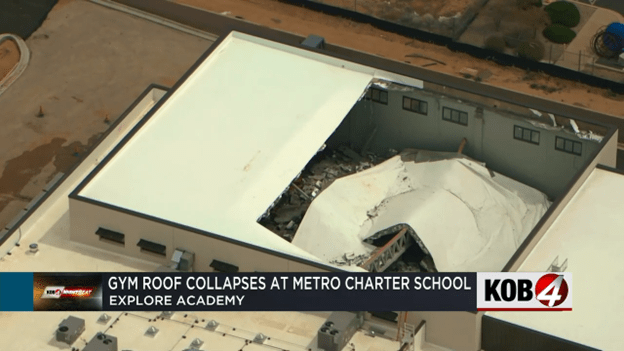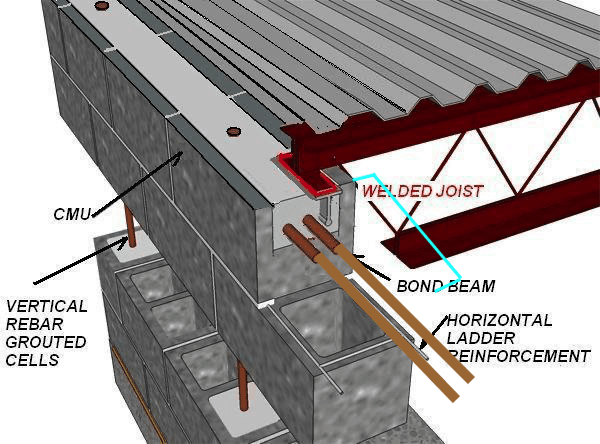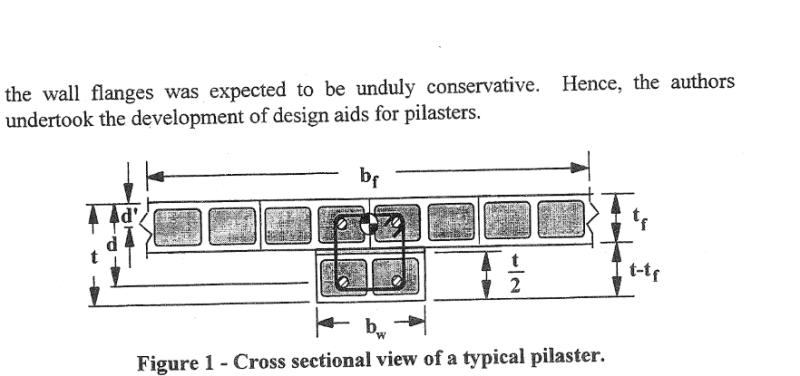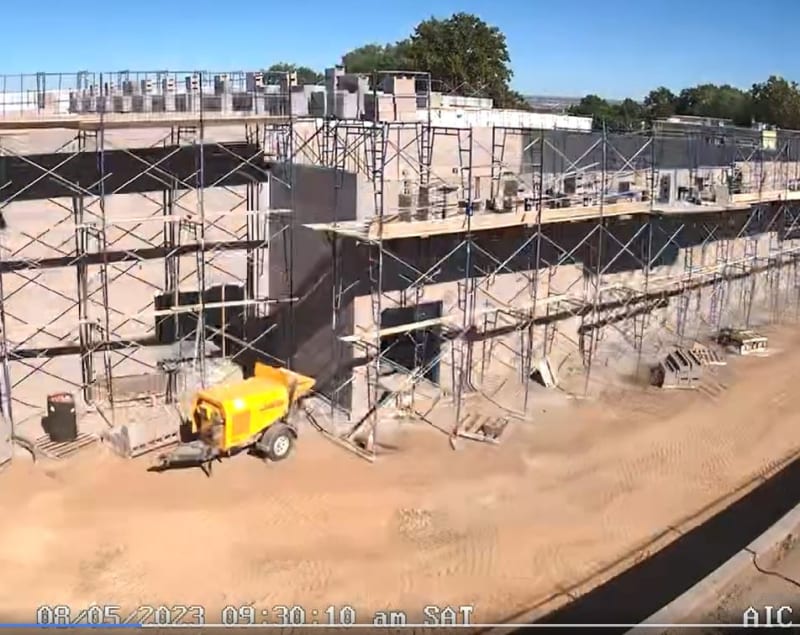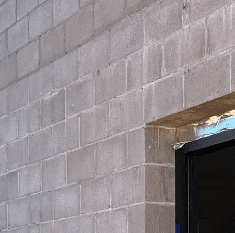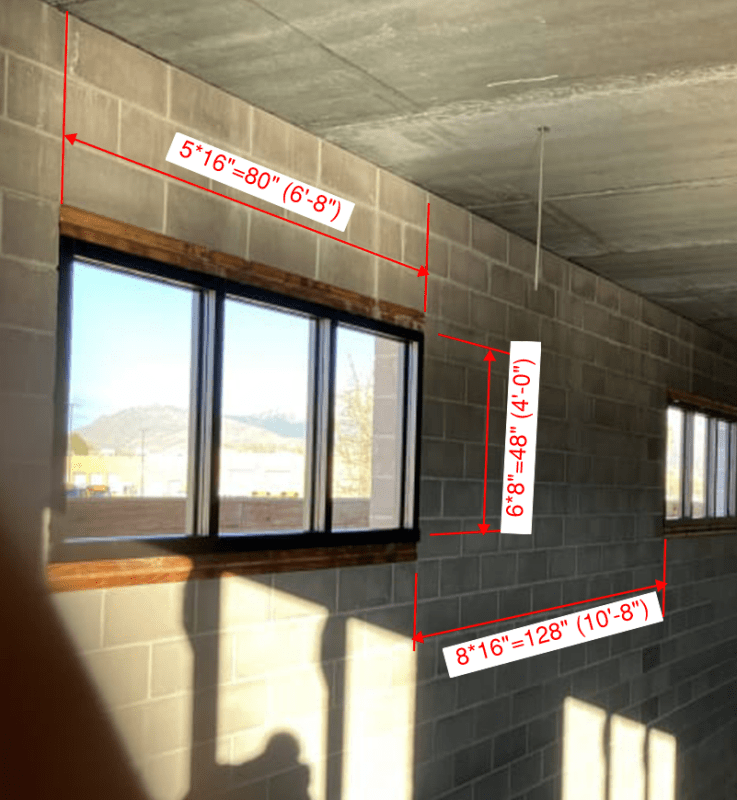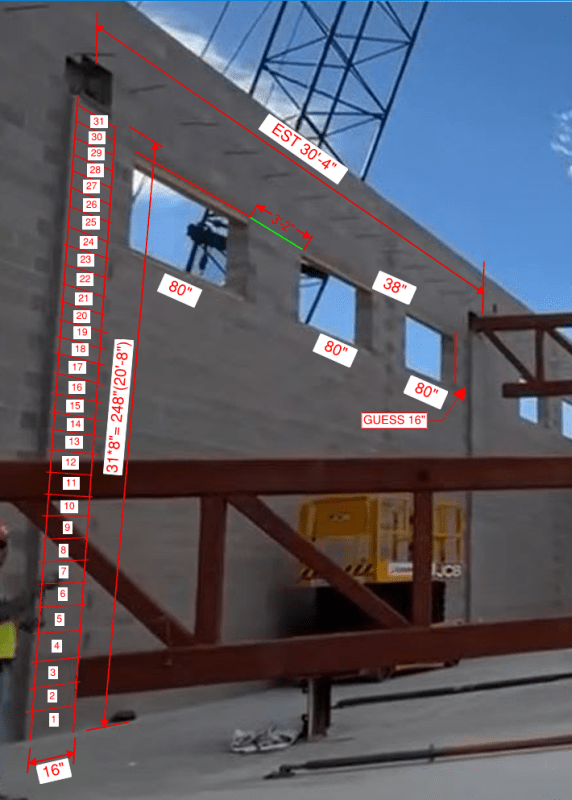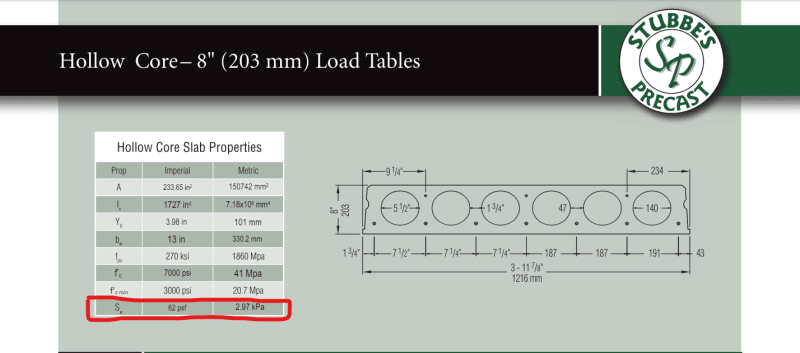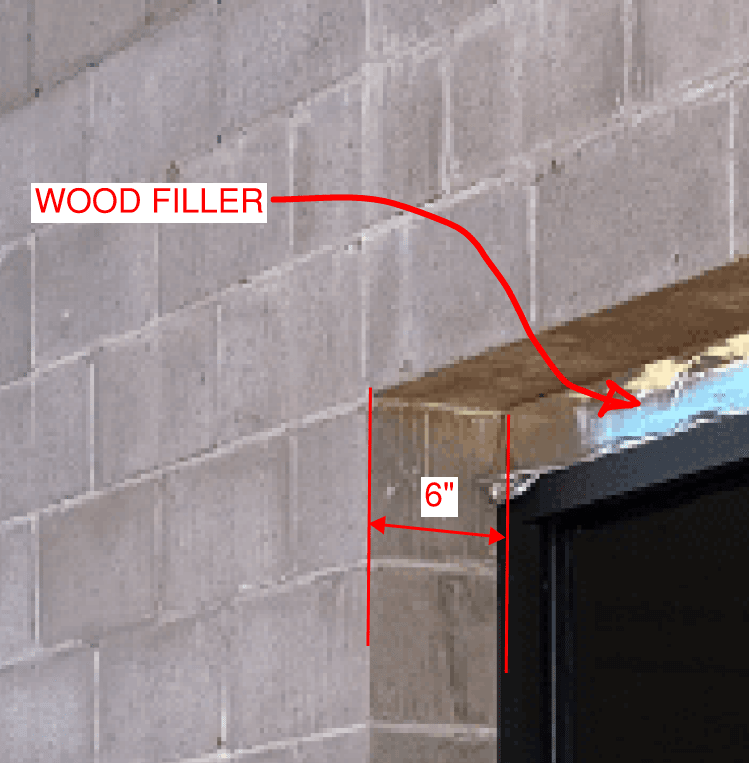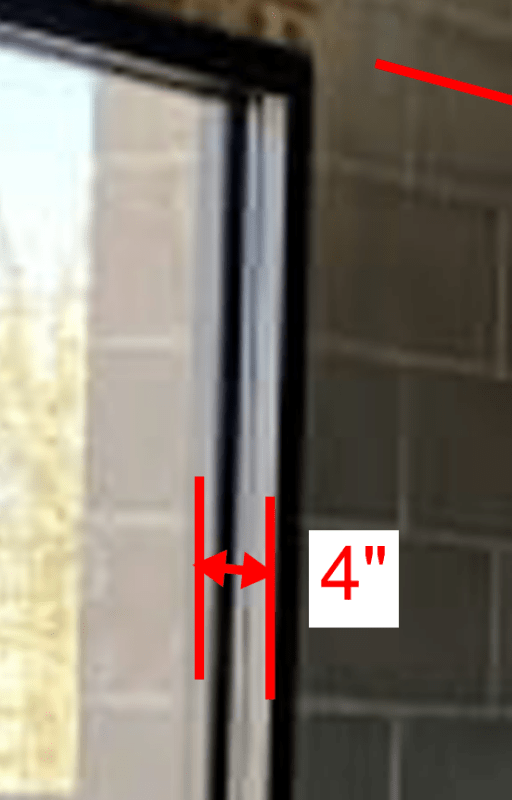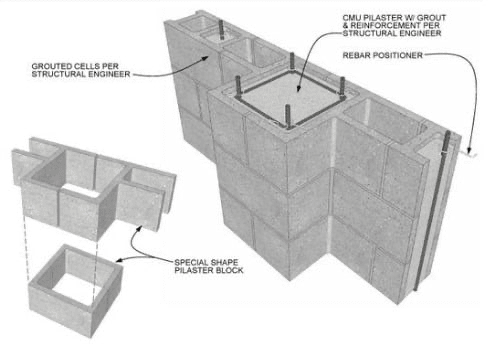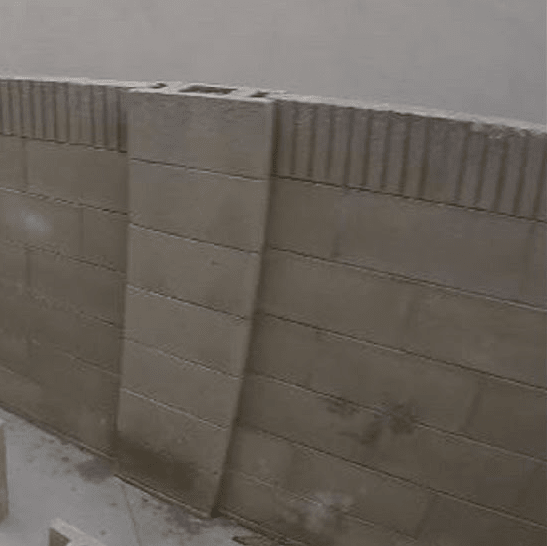ALBUQUERQUE, N.M. — In-person classes have been canceled at a local charter school for the rest of the week after the roof of its new gym collapsed.
School officials say the new gym at the Explore Academy middle and high school campus was basically complete. They were even planning on hosting a ribbon cutting Wednesday, but that’s been canceled, as well as all in-person classes.
Parents learned about the collapse through an email from the school Sunday night.
“The students are out the whole week now,” a parent told KOB 4 anonymously. “Because they have to get inspectors to gather and, at the request of the inspectors in particular, for students to stay away until they can just look the whole thing over.”
The parent said the incident has raised many more concerns about sending her child back to school.
“Students were going to be in that building in two days, and I think one of the big questions I personally have is, did it pass the inspection already?” the parent asked.
The answer is no. KOB 4 spoke with a rep from Albuquerque’s Planning Department. They said the construction company, AIC General Contractors, failed a building frame inspection on March 6. Inspectors found the trusses bowing or bending.
The city’s Planning Department didn’t know the roof had caved in until KOB 4 called Monday afternoon.
Explore Academy leaders say, as of now, it’s just the new gym that seems to be impacted, but they aren’t taking any chances.
“They discovered the damage and evaluated the situation and decided that we would go ahead and go to asynchronous learning until we have a sign off that the entire building and structure is, in fact, safe for students to enter,” said Katia Pride, Explore Academy’s director of outreach.
Pride said there was no obvious damage to nearby classrooms. The school will also have to bring in an engineering company to create a repair plan.
The city’s Planning Department will be sending a building complaints investigator to figure out what went wrong.
